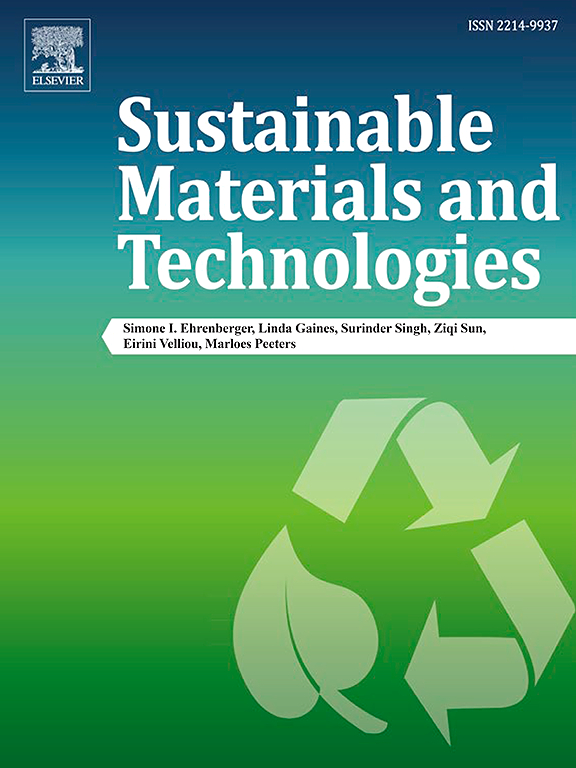Progress towards composition-based inline sorting and recycling of multilayer polymer packaging
IF 8.6
2区 工程技术
Q1 ENERGY & FUELS
引用次数: 0
Abstract
Two-dimensional plastic packaging films provide vital protection during transport and storage of food and other goods, offering significant economic benefits compared to other materials. However, their usage results in a considerable amount of packing waste including multi-materials and multilayer films made of various polymer layers, which are exceptionally difficult to recycle into high-value products. To promote sustainable material usage, efforts towards recycling of these two-dimensional materials are essential. This work presents a proof of concept for composition-based mechanical sorting of multilayer plastic films. The use of transflectance near-infrared (NIR) hyperspectral imaging data collected on a laboratory scale sorting line and principal component analysis (PCA) allowed a composition-specific distinction. Besides the separation of multilayers from monolayers, several multilayer classes according to their two major polymer components were identified. In case of two commonly used multilayers, polyethylene-polyamide (PE/PA) and polyethylene-polyethylene terephthalate (PE/PET), further NIR based classification was found and investigated using Raman and attenuated total reflectance Fourier transform infrared (FTIR-ATR) imaging spectroscopy. Cross-section analysis showed that only certain classes within PE/PA multilayers contain ethylene vinyl alcohol, whereas classes within PE/PET showed the presence of polyvinyl alcohol layers and different number of layers. This composition-based sorting method could enhance the recycling potential of multilayer packaging films.

多层聚合物包装基于成分的在线分类和回收的进展
二维塑料包装薄膜在食品和其他货物的运输和储存过程中提供重要的保护,与其他材料相比,提供显着的经济效益。然而,它们的使用导致了相当数量的包装废物,包括多种材料和由各种聚合物层制成的多层薄膜,这些废物非常难以回收利用成高价值产品。为了促进材料的可持续使用,必须努力回收这些二维材料。这项工作提出了基于成分的多层塑料薄膜机械分选的概念证明。利用在实验室规模分选线上收集的透射近红外(NIR)高光谱成像数据和主成分分析(PCA)可以对成分进行特定区分。除了将多层膜与单层膜分离外,还根据其两种主要聚合物组分划分了几种多层膜。对于两种常用的多层材料,聚乙烯聚酰胺(PE/PA)和聚乙烯聚对苯二甲酸乙二醇酯(PE/PET),采用拉曼和衰减全反射傅里叶变换红外(FTIR-ATR)成像光谱进一步发现并研究了基于近红外的分类。截面分析表明,PE/PA多层膜中只有某些类别含有乙烯醇,而PE/PET多层膜中存在不同数量的聚乙烯醇层。这种基于成分的分选方法可以提高多层包装膜的回收潜力。
本文章由计算机程序翻译,如有差异,请以英文原文为准。
求助全文
约1分钟内获得全文
求助全文
来源期刊

Sustainable Materials and Technologies
Energy-Renewable Energy, Sustainability and the Environment
CiteScore
13.40
自引率
4.20%
发文量
158
审稿时长
45 days
期刊介绍:
Sustainable Materials and Technologies (SM&T), an international, cross-disciplinary, fully open access journal published by Elsevier, focuses on original full-length research articles and reviews. It covers applied or fundamental science of nano-, micro-, meso-, and macro-scale aspects of materials and technologies for sustainable development. SM&T gives special attention to contributions that bridge the knowledge gap between materials and system designs.
 求助内容:
求助内容: 应助结果提醒方式:
应助结果提醒方式:


